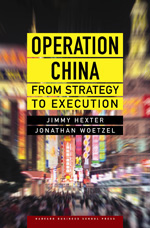Danfoss’s Awakening
The need for Western companies to set more ambitious goals in China is nicely illustrated by the story of Danfoss, a Danish manufacturer of valves, compressors, and other industrial goods.
Danfoss had established a presence in China, and was enjoying strong growth – by traditional financial standards. But when Danfoss’s CEO made a trip to inland China, and saw an advanced refrigerator that offered sophisticated controls to manage energy consumption, he realized Danfoss was perhaps missing the larger market story.
Like many Western companies, Danfoss was primarily making and selling in China the same types of products it sold in other parts of the world. While reducing its costs for those products, and having respectable sales growth in China, it was, in effect, addressing only the highest tiers of the market. Most of the mid-level, and all of the huge low-end market, were not being addressed by the company’s product strategy; in fact, the company didn’t really understand those markets existed in China.
Not only was Danfoss missing an opportunity to drive higher sales growth, it was, in fact, losing market share at the same time it was posting strong sales gains by Western standards – a “path to nowhere.”
Danfoss’s analysis concluded they actually had the opportunity to increase sales by a factor of 10 and profits by a factor of 30, exponential increases from the modest sales growth the company had been proud of to date.
Hexter and Woetzel say Western companies must set “uncomfortably high aspirations” for Chinese operations, far more aggressively than would be set anywhere else in the world. Not only are these aggressive goals achievable, but reaching such targets may be necessary to build a defensible market share as competition from domestic Chinese companies and other Western multi-nationals increases dramatically.
 Current Levels of China Sourcing aren’t Enough Current Levels of China Sourcing aren’t Enough
Hexter and Woetzel also argue that despite the rapid growth in direct or outsourced manufacturing in China, most Western companies are not moving enough production there fast enough.
“Global companies could source substantially more from China than they do now,” Hexter and Woetzel state. This is, in part, because while Western companies know they are getting savings from China, they generally “don’t know yet just how low prices in China can be.”
One example: a US retailer saw 20-30% savings in most items sourced from China – then was amazed to see some of its primary suppliers drop prices another 20-30% when it tried a reverse auction bidding process for potential Chinese suppliers.
“Global companies are leaving tremendous value on the table,” Hexter and Woetzel conclude.
Getting Lean in China
Too many Western companies have not looked hard enough at how to maximize efficiency in Chinese operations, and to take advantage of the unique cost savings opportunities available there.
“Low labor costs have frequently excused a multitude of manufacturing performance deficiencies that global companies would never allow in their operations elsewhere in the world,” Hexter and Woetzel write.
The answer is a unique blend of implementing global strategies and processes, such as Lean thinking, while leveraging the differences in China’s labor and equipment markets. It also means being more relentless in terms of looking for cost savings opportunities, especially in product design.
For example, the right approach in China may be to combine a lower level in equipment and automation with a more labor-intensive manufacturing model built around Lean principles.
The results can be impressive. When Cleveland-based Preformed Line Products was faced with schedule and delivery challenges in its China factory, it adopted a Lean approach that within one year led to a decrease in lead times from 14 days to 3, and an almost 100% increase in factory utilization.
The Stakes are High
The “Operation China” imperative is more than just about improving short term financial results from sales and sourcing there. Exploring similar themes to Dragons at Your Door: How Chinese Cost Innovation is Disrupting Global Competition, another recent book on the topic (see SCDigest review and comment), Hexter and Woetzel argue that not only will the next few years determine the fate of many companies within China’s market, the battle is increasingly being played on the global stage.
There are huge numbers of domestic Chinese competitors. Many are using aggressive cost innovation not only to survive in the fiercely competitive local market, but to take those products and learnings to other global markets.
“The most successful multi-nationals in China are successful because they are stellar at execution – specifically by ‘applying the global standard in China,’” Hexter and Woetzel write. “But in the years ahead, that phrase may evolve to ‘developing the global standard in China.’”
We’ve only covered the surface here. Operation China: from Strategy to Execution is an excellent book that provides excellent insight and should create a sense of urgency for company executives, supply chain managers, and anyone with operational responsibility for sourcing, manufacturing, or distribution within China.
What’s your take on the message in “Operation China?” Are Western companies not moving fast enough? Let us know your thoughts at the Feedback button below. |